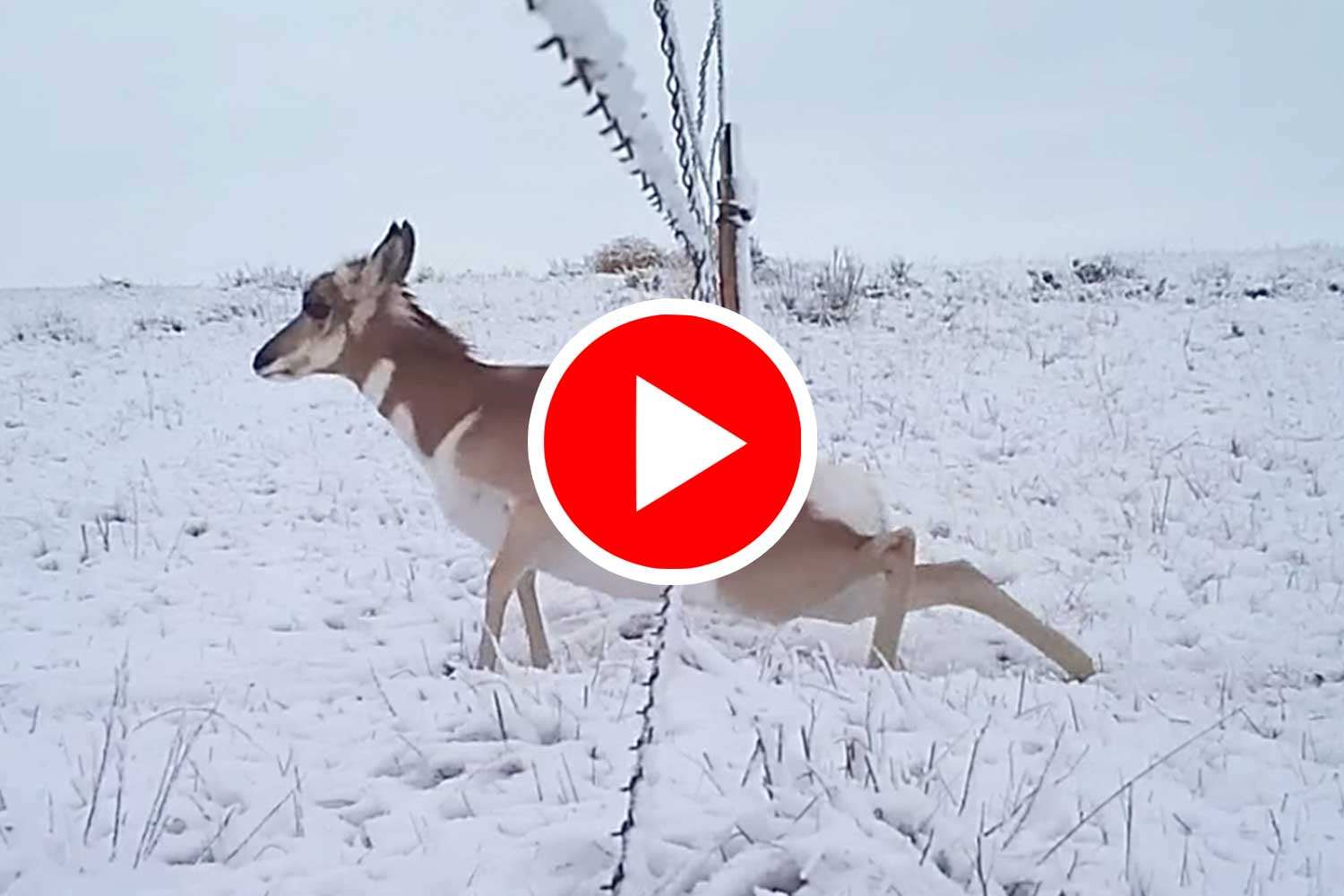Opening the Range
ACA’s ongoing pronghorn projects focus on one of the most specialized mammals in the grasslands. It’s a mammal unlike any other…and with that comes its own unique problem.
Pronghorn are long-distance sprinters, hitting speeds up to 95 km/h. That makes it the fastest land animal in North America! Because it evolved on the wide-open plains, pronghorn developed a need for speed—but alas, limited ability to jump.
They have been migrating across North America since there was a continent to migrate across. It’s the last hundred years that have brought miles of barbed-wire fencing, impeding essential travel routes across their range (which includes Alberta, Montana and Saskatchewan). The continued changes over the last 20 years from anthropogenic developments in Alberta may further disrupt the ability of pronghorn to freely migrate and move across the landscape.
Unwilling to jump fences, pronghorn are forced to attempt crawling under the lowest barbed wire—usually a mere 30 centimetres off the ground. The barbs rip their hair and skin, leaving them exposed to Alberta’s ruthless winter. Sometimes they get caught up in the wires, leaving them defenseless against predators or dying from exhaustion.
AFGA, ACA and other groups (including ones across borders) have been chipping away at pronghorn challenges for years, installing wildlife-friendlier fencing, as well taking on other initiatives to help the grasslands ecosystem that the mammals rely on. Plans continue, until at the very least pronghorn can travel unimpeded once again.
When deciding what fencing enhancements will benefit pronghorn, we also need to consider all the other grassland species. ACA tested three fence modifications specific for pronghorn as well as two modifications for deer. ACA also tested whether the white color and movement of sage-grouse reflectors on a fence impeded the movement of pronghorn. The results of these studies have been published and are providing alternative wildlife friendly fence modifications for both pronghorn and deer. The new wildlife friendly fencing standard for North America is a double stranded smooth bottom wire set at 45 cm (18 inches) and a top wire height of 102-107 cm (40-42 inches).
Corporate Partners in Conservation
Project Sponsors
- Bushnell
- Canadian Forces Base Suffield
- National Fish and Wildlife Foundation
- Safari Club International – Northern Alberta Chapter (Hunting Heritage Fund)
- TD Friends of the Environment Foundation
- The Nature Conservancy
- University of Montana
Since 2009, ACA has assisted Alberta Fish & Game Association with modifying fences to pronghorn standards. Our involvement in the project includes manpower and funding through various grants (e.g., National Fish and Wildlife Foundation). So far, over 600 km of fencing within the grasslands of southern Alberta has been retrofitted. The modification affects the bottom wire on a barbed wire fence, raising it from 30 to 45 centimetres and replacing it with a double-stranded smooth wire.
Project Sponsors
- Alberta Fish and Game Association
- National Fish and Wildlife Foundation
Pronghorn Xing is a citizen science program developed by Miistakis Institute—in partnership with Alberta Conservation Association, Alberta Transportation, the Government of Alberta (GoA), Nature Conservancy of Canada, Saskatchewan Ministry of Environment, and Saskatchewan Government Insurance—to learn where the pronghorn are crossing the highway. Information on wildlife sightings were gathered through a website mapping tool or a free smartphone app and lead to the development of a suite of potential road mitigation sites along Highway 1 in Alberta and Saskatchewan. We are currently prioritizing the road mitigation sites based on land ownership, site characteristics, and the level of fencing in the surrounding area. In addition, we are developing a conservation strategy to direct future efforts, including the design and cost assessment of various road crossing structures and associated deflection fencing.
Read how we prioritized the various segments of Highway 1 for potential road mitigation projects based on data collected via Pronghorn Xing in the Journal of Nature Conservation; Where to invest in road mitigation? A comparison of multiscale wildlife data to inform roadway prioritization.
Project Sponsors
- Miistakis Institute
- Alberta Transportation
- Environment and Climate Change Canada / Government of Canada
- Government of Alberta
- Saskatchewan Ministry of Environment
- Saskatchewan Government Insurance
- National Fish and Wildlife Foundation
- Nature Conservancy of Canada
